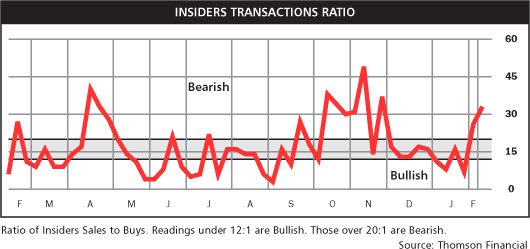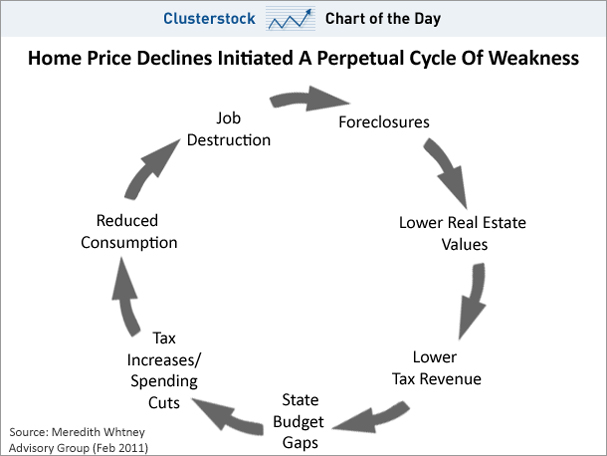 Image via Wikipedia
Image via Wikipedia
Interesting stuff.

Thoughts about the markets, automated trading algorithms, artificial intelligence, and lots of other stuff
 Image by Getty Images via @daylife
Image by Getty Images via @daylife
So, here is a new Jeopardy Question?
"The name of the machine that first won on Jeopardy."
Answer : What is IBM Watson ?
You probably heard that IBM's supercomputer Watson crushed human champions Ken Jennings and Brad Rutter in Jeopardy this week.
Here is a link to The Jeopardy Watson minisite.
Jon Stewart joked last night that "Apparently they have run out of qualified human contestants for Jeopardy." Video below.
| The Daily Show With Jon Stewart | Mon – Thurs 11p / 10c | |||
| Intro – Watson Competes on Jeopardy | ||||
|
||||
The pace of technology is quickening … The future is so close you can build it.
 Image by Getty Images via @daylife
Image by Getty Images via @daylife
So, here is a new Jeopardy Question?
"The name of the machine that first won on Jeopardy."
Answer : What is IBM Watson ?
You probably heard that IBM's supercomputer Watson crushed human champions Ken Jennings and Brad Rutter in Jeopardy this week.
Here is a link to The Jeopardy Watson minisite.
Jon Stewart joked last night that "Apparently they have run out of qualified human contestants for Jeopardy." Video below.
| The Daily Show With Jon Stewart | Mon – Thurs 11p / 10c | |||
| Intro – Watson Competes on Jeopardy | ||||
|
||||
The pace of technology is quickening … The future is so close you can build it.
Insider Transactions Show Lots of Selling.
According to Mark Hulbert, corporate insiders have been selling for more than a few weeks while the market has been going up.
While that means the people with the most inside knowledge are selling … it hasn't changed the fact that stimulus continues to push prices higher. Price is the primary indicator. While the torrent of insider selling is unmistakeably bearish, the market has ignored the less important measure.
Here is the insider transaction ratio based on data from Thomson Financial:

Meanwhile, while corporate insiders as a group are busy selling their company’s shares as fast as they can, they have no qualms about issuing buy backs of those same shares with the corporations money. According to Trader's Narrative, US share buybacks are at the highest level since the fall of Lehman Bros. Last week, $27.3 billion buybacks were announced – the highest since September 2008. Companies are continuing to use their massive cash hoard to repurchase shares.
This may make shareholders happy and drive per share earnings growth but many fret that this is a sign that performance is once again being artificially manufactured instead of earned through profitable performance or growth. According to research from Citigroup, 37% of the per share growth of earnings in the S&P 500 may be traced back to buybacks if they match last year’s pace.
Business Posts Moving the Markets that I Found Interesting This Week:
Lighter Ideas and Fun Links that I Found Interesting This Week
Insider Transactions Show Lots of Selling.
According to Mark Hulbert, corporate insiders have been selling for more than a few weeks while the market has been going up.
While that means the people with the most inside knowledge are selling … it hasn't changed the fact that stimulus continues to push prices higher. Price is the primary indicator. While the torrent of insider selling is unmistakeably bearish, the market has ignored the less important measure.
Here is the insider transaction ratio based on data from Thomson Financial:

Meanwhile, while corporate insiders as a group are busy selling their company’s shares as fast as they can, they have no qualms about issuing buy backs of those same shares with the corporations money. According to Trader's Narrative, US share buybacks are at the highest level since the fall of Lehman Bros. Last week, $27.3 billion buybacks were announced – the highest since September 2008. Companies are continuing to use their massive cash hoard to repurchase shares.
This may make shareholders happy and drive per share earnings growth but many fret that this is a sign that performance is once again being artificially manufactured instead of earned through profitable performance or growth. According to research from Citigroup, 37% of the per share growth of earnings in the S&P 500 may be traced back to buybacks if they match last year’s pace.
Business Posts Moving the Markets that I Found Interesting This Week:
Lighter Ideas and Fun Links that I Found Interesting This Week
With 24 hour a day news coverage and the Internet, the world seems to be getting smaller.
Population, however, is growing quickly.
One-in-a-Million is one thing … one-in-Seven-Billion is another.
With the worldwide population expected to exceed seven billion in 2011, this National Geographic magazine video provides a broad overview of demographic trends that got us to today … and will impact us all tomorrow.
It is interesting, fast-moving, and made me think. Worth the click.
With 24 hour a day news coverage and the Internet, the world seems to be getting smaller.
Population, however, is growing quickly.
One-in-a-Million is one thing … one-in-Seven-Billion is another.
With the worldwide population expected to exceed seven billion in 2011, this National Geographic magazine video provides a broad overview of demographic trends that got us to today … and will impact us all tomorrow.
It is interesting, fast-moving, and made me think. Worth the click.
As Markets continue higher, more people wonder how that reflects the real economy?
Meredith Whitney’s Perpetual Cycle of Weakness.
Why is Meredith Whitney so bearish on things? Business Insider has some insights on the subject. Perhaps it is because she sees the economy as a perpetual cycle of weakness.
Basically, as she sees it, job destruction leads to increased foreclosures, which in turn leads to lower real estate values, which then leads to lower tax revenues, which causes state budget gaps, etc.

For more, see “The Meredith Whitney Muni Bond Report That Insiders Have Been Passing Around“.
So, What’s Keeping the Market Moving Higher?
In short, the answer is that the Fed is printing money.
Officially the Federal Reserve System has a dual mandate, promote price stability and maximum employment. Now it has admitted to a third one, pushing stock prices higher via its quantitative easing policy.
During a recent CNBC interview, Steve Liesman asked Bernanke how he could claim QE2 was a success even though both interest rates and commodity prices have risen considerably since he first announced it. Bernanke’s response:
“Policies have contributed to a stronger stock market just as they did in March 2009, when we did the last iteration of this. The S&P 500 is up 20% plus and the Russell 2000, which is about small cap stocks, is up 30% plus.”
Permanent Open Market Operations.
According to the NY FED, Permanent Open Market Operations, or “POMO”, are purchases or sales of securities on an outright basis that add or drain reserves and change the size of the System Open Market Account (“SOMA”). As you know, on November 3, 2010, the FOMC decided to expand the Federal Reserve’s holdings of securities in the SOMA to promote a stronger pace of economic recovery.
The chart below, from the McClellan Report, shows how well that technique has worked.
The Fed’s POMO actions are keeping the financial markets flush with cash, and the Markets are responding. However, Bernanke says he’ll quit QE2 in June. What happens then?
In the meantime, be vigilant and enjoy the ride.
Business Posts Moving the Markets that I Found Interesting This Week:
Lighter Ideas and Fun Links that I Found Interesting This Week
As Markets continue higher, more people wonder how that reflects the real economy?
Meredith Whitney’s Perpetual Cycle of Weakness.
Why is Meredith Whitney so bearish on things? Business Insider has some insights on the subject. Perhaps it is because she sees the economy as a perpetual cycle of weakness.
Basically, as she sees it, job destruction leads to increased foreclosures, which in turn leads to lower real estate values, which then leads to lower tax revenues, which causes state budget gaps, etc.

For more, see “The Meredith Whitney Muni Bond Report That Insiders Have Been Passing Around“.
So, What’s Keeping the Market Moving Higher?
In short, the answer is that the Fed is printing money.
Officially the Federal Reserve System has a dual mandate, promote price stability and maximum employment. Now it has admitted to a third one, pushing stock prices higher via its quantitative easing policy.
During a recent CNBC interview, Steve Liesman asked Bernanke how he could claim QE2 was a success even though both interest rates and commodity prices have risen considerably since he first announced it. Bernanke’s response:
“Policies have contributed to a stronger stock market just as they did in March 2009, when we did the last iteration of this. The S&P 500 is up 20% plus and the Russell 2000, which is about small cap stocks, is up 30% plus.”
Permanent Open Market Operations.
According to the NY FED, Permanent Open Market Operations, or “POMO”, are purchases or sales of securities on an outright basis that add or drain reserves and change the size of the System Open Market Account (“SOMA”). As you know, on November 3, 2010, the FOMC decided to expand the Federal Reserve’s holdings of securities in the SOMA to promote a stronger pace of economic recovery.
The chart below, from the McClellan Report, shows how well that technique has worked.
The Fed’s POMO actions are keeping the financial markets flush with cash, and the Markets are responding. However, Bernanke says he’ll quit QE2 in June. What happens then?
In the meantime, be vigilant and enjoy the ride.
Business Posts Moving the Markets that I Found Interesting This Week:
Lighter Ideas and Fun Links that I Found Interesting This Week